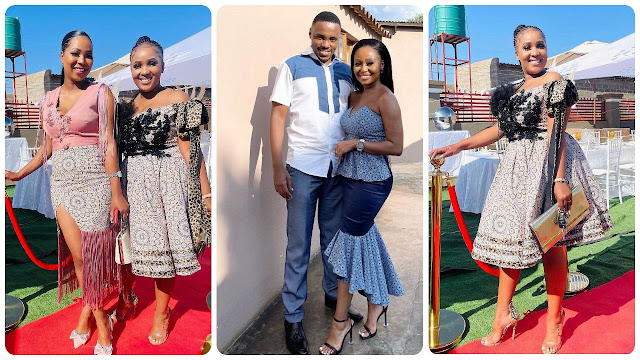Proudly African: Celebrating Identity Through Shweshwe Fashion
Proudly African: Celebrating Identity Through Shweshwe Fashion
In a world where fashion often borrows from every corner of the globe, Shweshwe fabric stands as a symbol of authentic African identity, proudly rooted in history and culture. Worn for generations and reimagined by today’s designers, Shweshwe is more than just a textile—it’s a statement of pride, heritage, and self-expression.
This iconic fabric has become a powerful cultural symbol, especially in South Africa, where it plays a vital role in celebrations, weddings, and traditional ceremonies. But in recent years, it has also evolved into a fashion-forward choice for modern African women who want to honor their roots while expressing their individual style.
Let’s explore how Shweshwe fashion helps celebrate identity and why it continues to capture the hearts of wearers and designers alike.
A Fabric With Deep Roots
Shweshwe originated from European settlers in the 19th century, but African communities quickly adopted and adapted it into a cultural cornerstone. It became especially prominent among the Xhosa, Tswana, and Sotho people, who used it in traditional dress, ceremonies, and rites of passage.
Today, Shweshwe is locally manufactured in South Africa, particularly in the Eastern Cape, using a distinctive printing process that gives it its recognizable texture and patterns. Traditionally dyed in deep indigo, the fabric now comes in a variety of vibrant colors and prints, expanding its versatility and appeal.
Cultural Significance of Shweshwe
What makes Shweshwe truly special is the meaning it holds for those who wear it. For many, putting on a Shweshwe dress isn’t just about looking good—it’s about wearing a piece of one’s heritage.
Shweshwe garments are commonly worn during:
Lobola negotiations
Traditional weddings
Coming-of-age ceremonies
Cultural festivals
In these contexts, the fabric becomes a form of storytelling—a way to honor ancestors, show respect, and celebrate identity.
Shweshwe in Modern Fashion
As African fashion gains recognition on global runways, Shweshwe has emerged as a trendsetting textile in the contemporary fashion world. Designers have embraced it to create looks that are stylish, empowering, and culturally significant.
From mermaid gowns and peplum dresses to jumpsuits, skirts, and even blazers, Shweshwe proves that traditional fabric can be endlessly versatile. It’s being worn by CEOs, students, brides, influencers, and artists alike—each adding their own modern twist while staying grounded in cultural meaning.
🔹 Key Modern Styles Include:
Slim-fit dresses with bold ruffle accents
Off-the-shoulder and high-slit designs
Two-piece sets and matching headwraps
Mixed-fabric outfits that pair Shweshwe with lace, chiffon, or mesh
These styles reflect how African women are confidently balancing tradition and trend, showcasing a fashion sense that is both rooted and forward-looking.
Why Shweshwe Fashion is More Than a Trend
In an age of fast fashion and mass production, Shweshwe remains a timeless and meaningful choice. Here’s why:
✅ It celebrates African heritage in a visible, tangible way.
✅ It empowers local artisans and designers, sustaining cultural industries.
✅ It encourages cultural pride and identity in younger generations.
✅ It provides endless design possibilities for modern fashion lovers.
Wearing Shweshwe is not about following a trend—it’s about making a statement: “This is who I am. I am African. I am proud.”
Wearing Your Culture With Confidence
For those who wear Shweshwe, it’s more than just a dress. It’s a tribute to where they come from, a celebration of family and community, and a bold declaration of self-worth.
As African fashion continues to grow globally, Shweshwe stands out not just for its beauty, but for its cultural authenticity. It reminds us that style and identity can walk hand in hand, creating looks that are both modern and deeply meaningful.
So the next time you slip into a Shweshwe dress, know that you’re not just wearing fabric. You’re wearing your history, your culture, and your pride—all woven into one powerful piece of fashion.





















.jpg)

.jpg)
